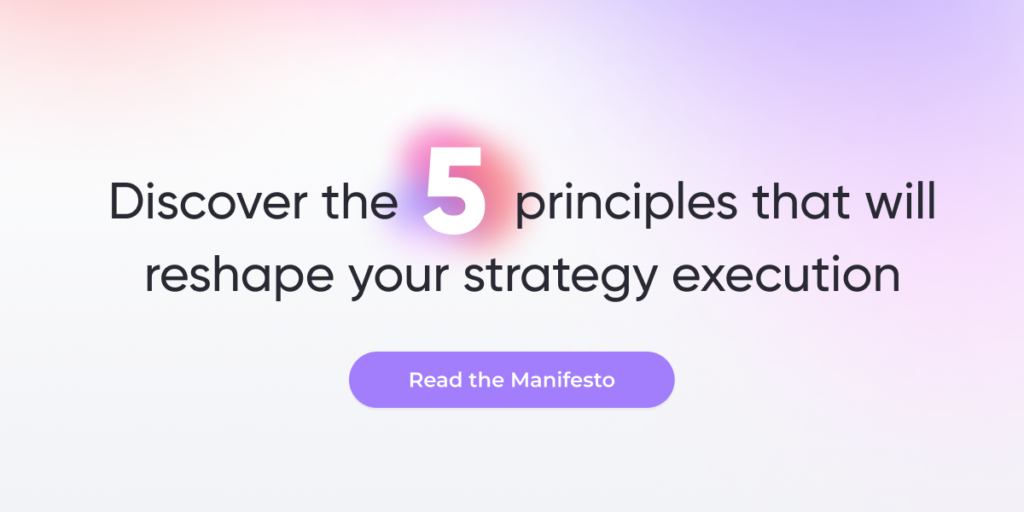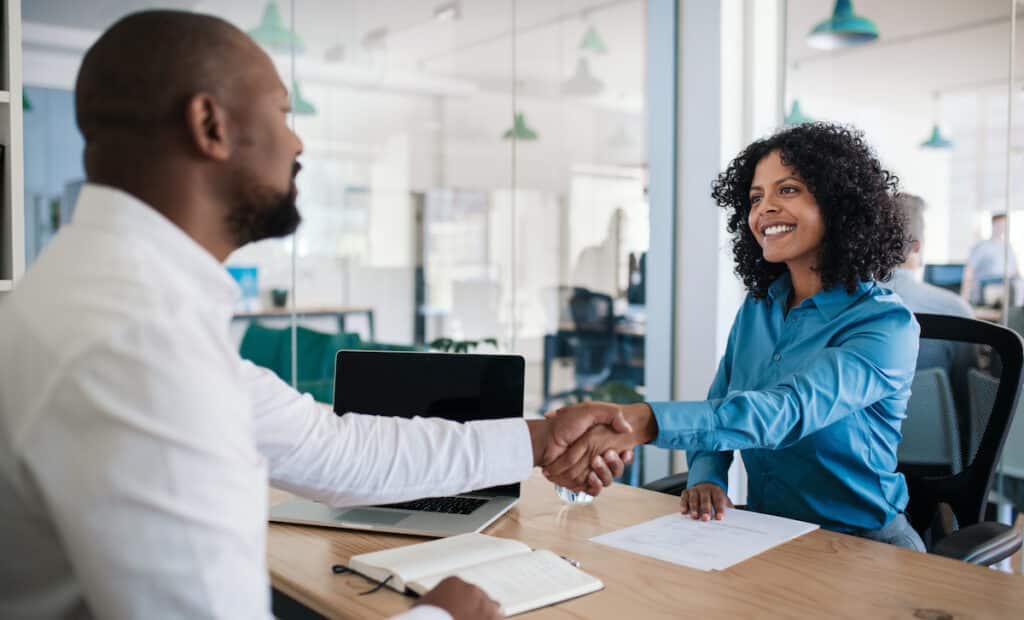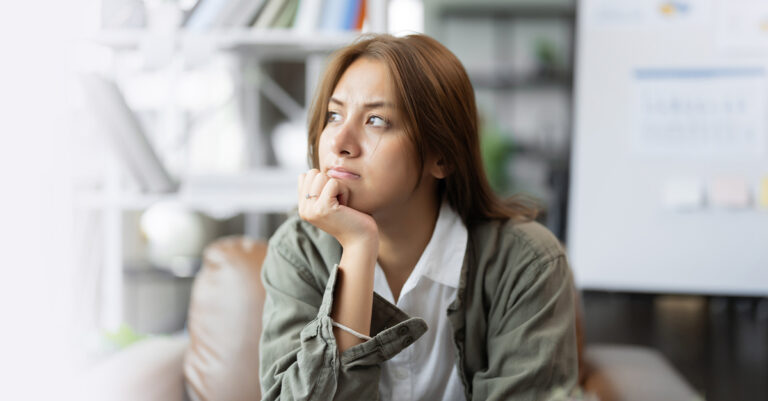Every employer wants to hire top talent, right? One would think so, but many aren’t setting up a talent acquisition process on just how to do that before they start placing ads on job boards.
Recruiting efforts often fail because human resources professionals and leaders don’t plan ahead for times when job vacancies pop up. We’re here to help!
What is talent acquisition?
Talent acquisition is the hiring process in which hiring managers or a talent acquisition team search for, interview, hire, and onboard potential candidates and new employees. While normally it is the job of human resources departments, oftentimes there are many other people involved.
Whether qualified candidates come through employee referrals or job postings, finding great talent can take a lot of work – and thus the importance of having an effective talent acquisition process.
Talent acquisition vs. recruitment
While talent acquisition and talent recruitment are often thought of as interchangeable, there are differences between them. They do both aim to hire qualified candidates for open positions, but the methods are slightly disparate.
Talent acquisition is considered to be an ongoing strategy, where HR professionals are aware of the long-term goals of a company, and spend the necessary time to plan and find good candidates for positions that require specific skillsets and experiences.
Hiring managers doing talent acquisition have a keen understanding of the state of the job market and workforce, as well as staffing trends – and where to find top talent.
The recruitment process is different in that there may not be much of a strategy; the goal is just to fill an open job, and move on to filling the next. Recruiting is more of a templated process, as it’s about filling vacancies – quickly. If you have ever been on the receiving end of a generic letter from a recruiter, you can tell that oftentimes they are just sending them out to job seekers that may or may not closely match exactly what they are looking for.
That’s not to say all recruiting is like this, but the majority tends to be.

What is a talent acquisition strategy?
A talent acquisition strategy is a structured search by an HR team for talented individuals to fill specific job openings. By having clear, refined job descriptions and company goals, and giving thought to how these employees may become future executives, HR teams can look for matching candidates to fill current and future roles in professional groups, by combing through LinkedIn, and attending professional events where they can network.
Talent acquisition strategies are not simple recruiting, or replying to candidates who just blindly apply for jobs; it’s a comprehensive process to find and hire the best active candidates (job-seeking) or passive candidates (non-job-seeking) to meet the specific need of a company.
How to build a successful talent acquisition strategy
In today’s job market especially, where job seekers have lots of different opportunities, employers need to step up their game when searching for top talent and potential candidates.
Both long and short-term talent acquisition strategies need to be put in place, and we’ve compiled a list of advice on building a solid hiring process. While there could never be a fully comprehensive talent acquisition strategy, we hope HR departments and internal communicators find a few gems to implement in their organization.
Don’t assume employees are getting the message — make sure they are. Learn the 4 steps to improving employee engagement.
Building the right infrastructure: Long-term strategies
Some talent acquisition strategies take time to build, and you need to think about long-term planning when meeting the future needs of your business in order to fill roles.
This isn’t about posting on job boards or attending job fairs; this is strategically putting together a plan for acquiring talent.
Build and promote your employer brand
The employer brand of a company is usually the first thing that a talent pool will come across. The talent acquisition process must work across the organization to ensure that the employee experience, hiring practice, and employer branding are noticed outside the corporate bubble.
Current employees already know what’s going on at the company; it’s the top candidates that you want to be aware of it.
Ensure you have a positive company culture
A company’s culture is important not only to the talented employees you already have on staff; it’s important to a potential candidate, too. In fact, according to research by Deloitte, 93% of survey respondents believe a distinct corporate culture is important to a business’s success.
HR leaders must remember that every company has at least three target audiences: customers, prospects, and employees.
The most important audience a company has is its own employees, but if your employees aren’t engaged and supporting your workplace culture, how can you expect your talent strategy to work and attract new hires?

Happy employees are easier to retain
Retaining employees at your company is an important priority because the costs of employee turnover are so high. In a competitive job market, this can be difficult to do.
Engaged employees are happier, healthier, more productive, and more likely to stay at their current jobs, and a great way to increase employee engagement is through better internal communications, a key part of any talent acquisition strategy.
Renew your focus on Diversity, Equity, and Inclusion
Investing in a genuine diversity, equity, and inclusion strategy should be a focus of every talent acquisition plan. Doing so can help organizations attract talent and retain them, letting them know where the company stands on such important issues and that they understand the benefits of a diverse workplace.
Make sure your offer competitive pay and a comprehensive benefits plan
A good salary alone may not be enough to attract top talent. A solid employee benefits plan, along with paychecks that meet or exceed market pay, will do more to help you find the best employees. Talented workers know their value, and they want to be rewarded for their efforts.
Find, train, and develop future executives
When planning for the future, and trying to fill vital roles, the HR department shouldn’t just be looking for a warm body to fill a seat. Acquiring the right talent, at the right time, and then investing in development opportunities, means that talent could be around the long haul, always helping to grow the business and compete in a global economy.
Align your talent acquisition strategy with your business goals
Talent acquisition isn’t just for finding top talent; it’s for finding the best candidate for a necessary role, in order to meet business goals. Talent acquisition specialists need to refine job descriptions for open positions to match both the needs of the company and match candidate experience in order to hire the appropriate person.
Always be nurturing your talent pipelines
Colleges, communication groups, ex-employees, employee referral programs, HR professionals, and other contacts are a great way to always be aware of top talent.
Be sure your recruiting process and acquisition strategies are always building those connections!
Engage all the stakeholders
From leadership to managers to employees, get feedback from all stakeholders as to what is needed. This is the only way you will ensure that the right people are being hired for everyone’s strategic goals, across the entire company.
Oftentimes, HR can be siloed, working away just to fill positions on paper. Integrating with the rest of the organization gives them a clearer picture of the types of candidates that are needed.

Actionable strategies to start using now
Your talent acquisition strategy doesn’t wait for anyone, and there is no time like the present to start putting it into action. While we just discussed strategies that may take longer to implement, there are some you can start utilizing today to find the top team members you need to flush out your workforce.
Use these as part of your recruiting process to get a jump on finding the right talent.
The future is remote
There will always be a place for the in-office worker, especially in certain industries. But the workforce as a whole is working towards a hybrid model, where many employees can work from anywhere. Talent management teams need to understand this.
The time to embrace the future of work is now, when job seekers have their pick of the type of setup that matches their wants and needs – and remote availability is top of that list.
Optimize your career site and job postings
We mentioned it earlier, but make sure your job listings are aligned with your business goals, and make sure your career page or site features all the pertinent information related to openings, as well as material about your company’s culture and work environment.
Give a candidate every reason to apply for a position!
Gather candidate feedback from applicants
Did you have a candidate drop out of contention after an interview or two? Or maybe a candidate loved the process they went through to get hired? Collect any and all feedback from those who apply or accept a position, so you can use that to make your talent acquisition strategy even better.
Keep an eye on your competitors
Linkedin can be very useful to see where people are working, where they are moving to, or if they are looking for new opportunities. See a perfect candidate for a role you are trying to fill, but they work for a competitor? Reach out and gauge their interest in joining your team!
Trust in an employee referral program
Often, the best talent you could hire for your organization could be someone one of your employees already knows. Whether it’s a friend or a former coworker, your current employees already know your business and can help you fill in the blanks with the talent they know will be a good fit.
Audit your current talent acquisition practices…
What have you been doing, up until this point, to acquire a talented workforce? Has it been working? Can you tell? Take a comprehensive look at how you have been acquiring talent and if it doesn’t match up with some of the items on this list, or you feel it hasn’t been a success, it may be time for a change.
This leads us to…
Measuring for success
One of the top talent acquisition strategies is to track and analyze how your efforts are working. Recruitment software and talent management data, especially, allows you to see – in a dashboard – what kinds of things are having an effect and which could use some tweaking.
From how your job ads are written, to what the application/acceptance rate is, measuring for success is key to your success.
Attract previous employees
Some of the most talented employees you could find may have already worked for you. You don’t have to guess at their candidate experience; you know what they are capable of! Why not reach out to them and see if they would be up for rejoining the team?
Emphasize corporate core values
A company needs to uphold its stated values with deeds that keep promises to employees, customers, and the community, and that begins by communicating that company culture in ways that everyone understands and then can act upon.
An online survey of about 225 Gen Zers found that authenticity matters to them. A lot. And, they expect to see it in the way their employer engages and communicates with them.
Be sure to consider their needs when putting together a job description and searching for new talent.
Attract people from all over the world
Remote is the future; if your company isn’t already moving towards some kind of remote or hybrid work environment where possible, you could be missing out on attracting top candidates.
Learn the 5 steps to achieving communication satisfaction with remote workers.
There’s no longer a reason that you need to search for help in your neighborhood or within a certain radius to find the best talent. There are amazing workers spread out across the world, so be sure you are doing your best to try to reach them.
Conclusion
Working towards building a top talent acquisition strategy can be difficult, but it’s worth every bit of effort you put in and is critical to the success of an organization.
A more strategic approach to hiring, that develops a talent pipeline and continually brings in new, talented people, will do wonders for your company.
HR leaders and communicators alike need to focus on drawing the attention of top candidates to meet their goals, rather than waiting for the “right” people to apply for a position.
This is the new world of work, and it requires you to update your hiring process, today!
Explore our latest research to learn how, with the right mindset, today’s evolving workforce can accelerate your business.
Download PDF








